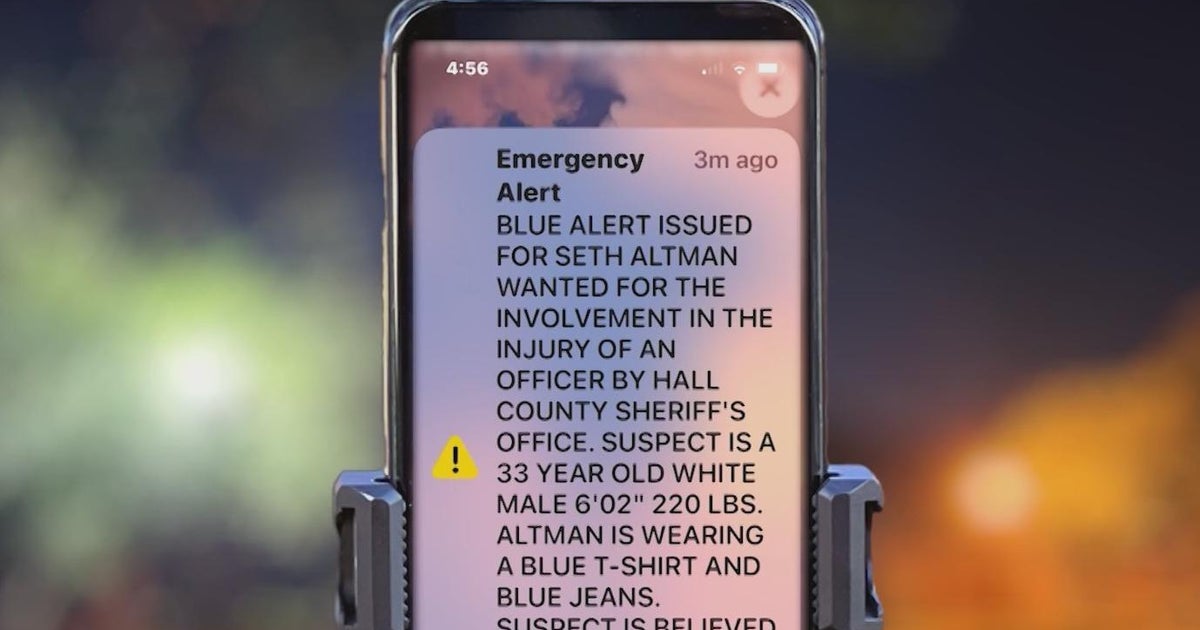North Texans React to Early Morning Blue Alert: A Wake-Up Call Gone Awry
Introduction to the Incident
In the early hours of the morning, as most North Texans were enjoying their final moments of rest, a sudden jolt disrupted the peace. The shrill sound of a Blue Alert blared through the cell phones of many, startling the community awake at precisely 5 a.m. The Texas Department of Public Safety (DPS) had issued this urgent notice in a bid to locate Seth Altman, who was wanted for the attempted capital murder of a peace officer. However, the timing and nature of the alert left many residents puzzled and rattled.
A Startling Awakening
Jordan Stickler was just about to rise for the day when the loud alert pierced the silence. “Yeah, so I was about to be up in about an hour or so,” he shared. “Then, I heard the alert come off, and it kind of freaked me out for a second.” The unexpected noise, which many initially mistook for an Amber Alert, was a harsh reminder that dangers can lurk even in the calmest hours of the night.
Brad Elmore and his wife, Audrey, along with their five children—including a toddler—were also among those jolted awake. Brad noted that the alert seemed unusually loud, adding to the alarm of not just the parents but also the small children trying to sleep. “He pretty much ignored it,” Audrey commented about their toddler. “It went off on my phone, his phone, our watches, and then my daughter’s phone, so I could hear it throughout the house.”
Public Response and Complaints
The early morning disruption prompted a wave of complaints from Texans, leading to nearly 4,000 grievances filed with the Federal Communications Commission (FCC). The tone and the timing of the Blue Alert gave the public pause, as many questioned whether such urgent notifications should reach them with such urgency, especially when the incident occurred some eight hours away in Memphis, Texas.
A spokesperson for the FCC indicated that the commission has yet to determine how to handle the influx of complaints. The issue has ignited discussions around the effectiveness and necessity of Blue Alerts, with many Texans feeling that the alerts, while important, could compromise their effectiveness when mismanaged.
Understanding Blue Alerts
DPS issued a statement clarifying the purpose of Blue Alerts, emphasizing that these urgent public safety warnings are designed to expedite the apprehension of violent criminals who pose a significant threat to law enforcement officers. The purpose is straightforward: generate tips and leads that will assist agencies in swiftly capturing dangerous suspects.
However, with such alerts firmly established in Texas law since 2008, some North Texans have begun to rethink their application. As Stickler pointed out, “But the crazy part was it was eight hours away from here. So it was pretty far away, which kind of made me wonder why we’re getting it?” This sentiment resonates with others who feel the urgency could be better calibrated to local contexts and incidents.
Desensitization to Alerts
One significant concern brought forth by the public is the potential desensitization to frequent alerts. Brad Elmore expressed concern that as alerts become more common—especially when they disrupt people’s sleep—there is a danger that they might start to lose their intended impact. “It may be annoying in the moment, but you know, you got to catch yourself,” he remarked. “I may need to pay attention because this is somebody’s loved one that’s missing. And you know, I might see a clue that can save their lives.”
Elmore’s perspective sheds light on the delicate balance between ensuring public safety and the potential for public fatigue. The Elmore family benefited from another type of alert when Brad’s father went missing, resulting in a successful Silver Alert just hours later. Their experience serves as a reminder of the positive impacts such systems can have when lives are at stake.
Conclusion: A Call for Reevaluation
With the Blue Alert system now facing scrutiny, particularly concerning its frequency and alerting parameters, many North Texans are calling for a reevaluation. While the public’s safety remains paramount, there exists an important conversation about how to effectively communicate danger without inadvertently desensitizing the population to genuine threats.
As discussions continue and complaints are assessed, it becomes clear that while alerts serve a critical function, community input and adaptability could be crucial in enhancing their efficacy for protecting all Texans.
